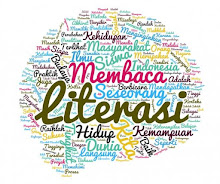Water content or food
moisture involves the whole
coverage of the food items in the world because foods are comprising a considerable amount of water rather than other ingredients. Foods are vital
components which are consumed by the people at each and every moment for the
surviving in the world. Basically, there are several kinds of foods are
available for the consumption as raw foods, processed foods and modified
foods in the market. The moisture content of the food material is important to
consider the food is suitable before the consumption because moisture
content affects the physical, chemical aspects of food which relates to the
freshness and stability for the storage of the food for a long period of time
and the moisture content determines the actual quality of the food before
consumption and to the subsequent processing in the food sector by the food
producers.
There are some methods that usually used to measure food moisture. Some of them are explained below.
1.
Oven Drying
The oven-drying method is lose of weight on heating used to calculate water content of sample. As we know that pure water evaporates at 100oC
at sea level. So, by heat the sample at water boiling point, it will
reduce the water that contains in food. The water content will be known by
calculate the different mass after drying. Some instrument that can be used in
this method is:
·
convection
oven, 101-105oC, several hours - overnight, heat stable
samples
·
forced
draft oven; better air circulation
·
vacuum
oven, approx. 70oC (25-100 mmHg), several hours - overnight, heat unstable
samples (sugars)
·
infrared
drying lamps; incorporates
direct reading balance, fast
but lacks accuracy, distance
from sample is important, sample thickness (curst formation), not approved by AOAC
·
vacuum
desiccators at room temperature; for products such as backing powder
Advantages:
o simple, little expense and
reasonably accurate
Disadvantages:
o unsuitable for products
§ C6H12O6
® 6C + 6H2O (produce moisture)
§ sucrose hydrolysis (utilise
moisture)
o containing volatile constituents
§ acetic & butyric acids;
alcohols, esters & aldehydes
o variation between samples due to
variation in sample particle size
2.
Distillation
Method
Distillation will used to know water content in food that
also contain some immiscible solvent
(xylene or toluene). This solvent has less dense than water with boiling point slightly higher. This
method will helps prevent
charring of sample and assists in heat transfer and effective distillation.
During distillation process sample
and solvent in distillation flask heated to distill emulsion of water and solvent. Emulsion condenses in condenser and runs into
graduated tube (Bidwell-Sterling moisture trap). Emulsion separates and water layer can be
measured on graduations under solvent layer.
Advantages;
o
useful
for foods containing low moisture content and volatile oils
o
cheap
to run, no sophisticated equipment
Disadvantages;
o
under
estimates water content (water droplet may cling to dirty apparatus)
o
requirement
for flammable solvents
3.
Chemical procedures - Karl Fischer Titration
This procedure is ideal for low moisture foods showing erratic results by oven drying.
It is rapid & sensitive
(no heat) and based on
reduction of iodine with SO2 in the presence of water.
2H2O
+ SO2 + I2 ® C5H2SO4
+ 2HI
Difficulties and sources of error of
Karl Fischer Titration are:
— Incomplete water extraction
(especially in solid food)
o
finely
grind food
— Atmospheric water (drying tubes)
— Moisture adhering to unit
— Interference
o
ascorbic
acid
o
carbonyl
compounds
o
unsaturated
fatty acids










0 comments:
Post a Comment